Located next to the gardens of the Campo del Moro, the Royal Palace, and the Almudena Cathedral, Madrid’s Royal Collections Gallery boasts a collection of 150,000 paintings, sculptures, tapestries, armor, furniture, and royal carriages. The museum displays 650 works at a time and one-third of the exhibited art gets switched out every year.
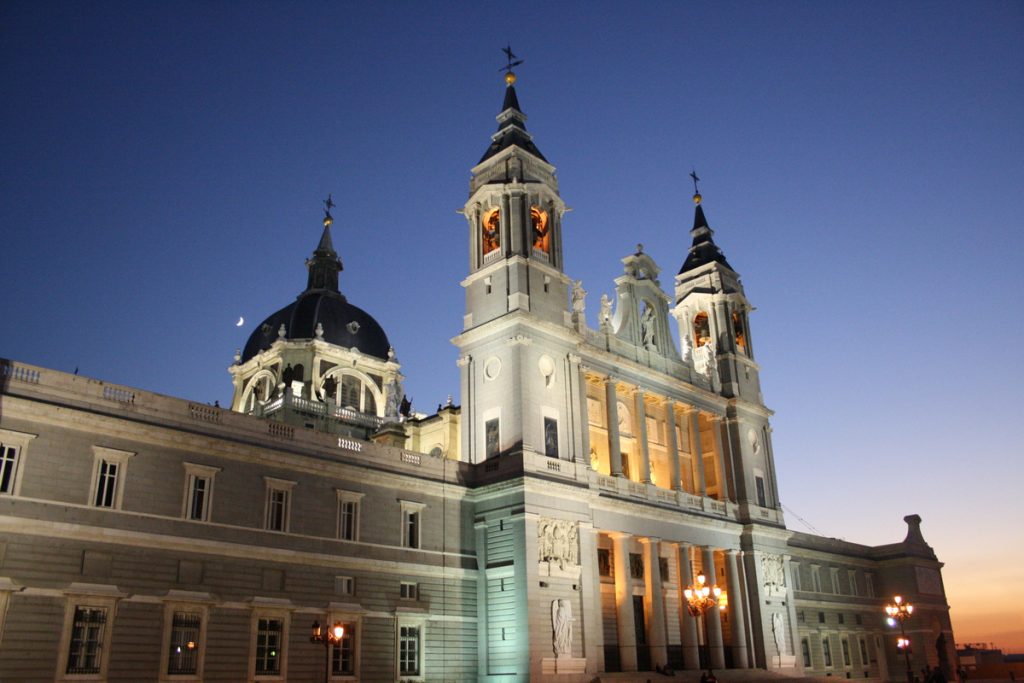
The Royal Collections Gallery in Madrid may still be overshadowed by the Prado Museum, but quietly has an incredible collection of world-class art on its walls. All the art and objects belonged to the Bourbon and Habsburg dynasties that ruled over Spain at one time or another.
Masterpieces at Madrid’s Royal Collections Gallery
Cross of Lecretius
Dated to the latter half of the seventh century, the Cross of Lucretius is the oldest remnant in the collection. The cross belonged to the first kings of the Iberian peninsula, the Visigoths, and shows some rare Byzantine influence in the art of this part of Europe.
Saint Michael Overwhelming the Devil – Luisa Roldán
The first female sculptor to work in the Spanish court, Luisa Roldán created this late-Baroque masterpiece in 1692. La Roldana, as she is sometimes called, was born in Sevilla and her father, a sculptor, taught her the art form. The dramatic sculpture, standing at almost nine feet high and weighing 350 pounds, is exemplary of the drama instilled in Baroque sculpture.
If the face of St. Michael looks particularly feminine to you, it is because La Roldana apparently modeled her own face for Michael’s and, it is said, the face of the devil has a striking resemblance to her husband.
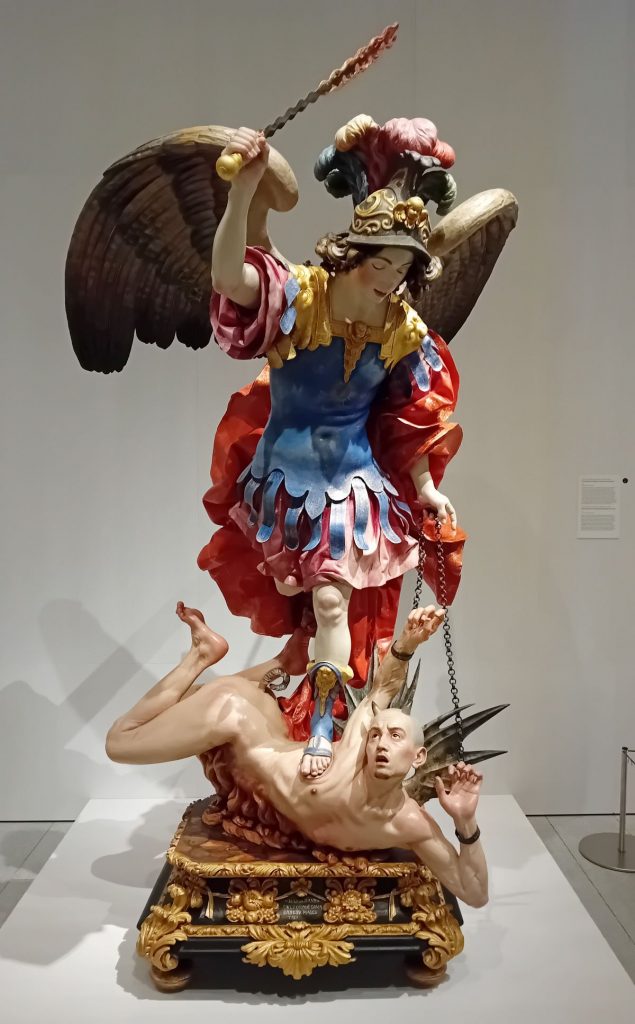
Crucified Christ – Lorenzo Bernini
Bernini, the master Baroque Sculptor, who is very well represented on Rome’s squares and in its churches, made this seven-foot sculpture of Christ on the cross. The work is one of his least dramatic, compared to some of his more famous works, such as the “Ecstasy of Saint Teresa” in Rome. It was made in 1655.
The Crucified Christ is only one of two Bernini works in Madrid. The other one, a sculpture of Saint Sebastian, is at the Thyssen-Bornemisza Museum.
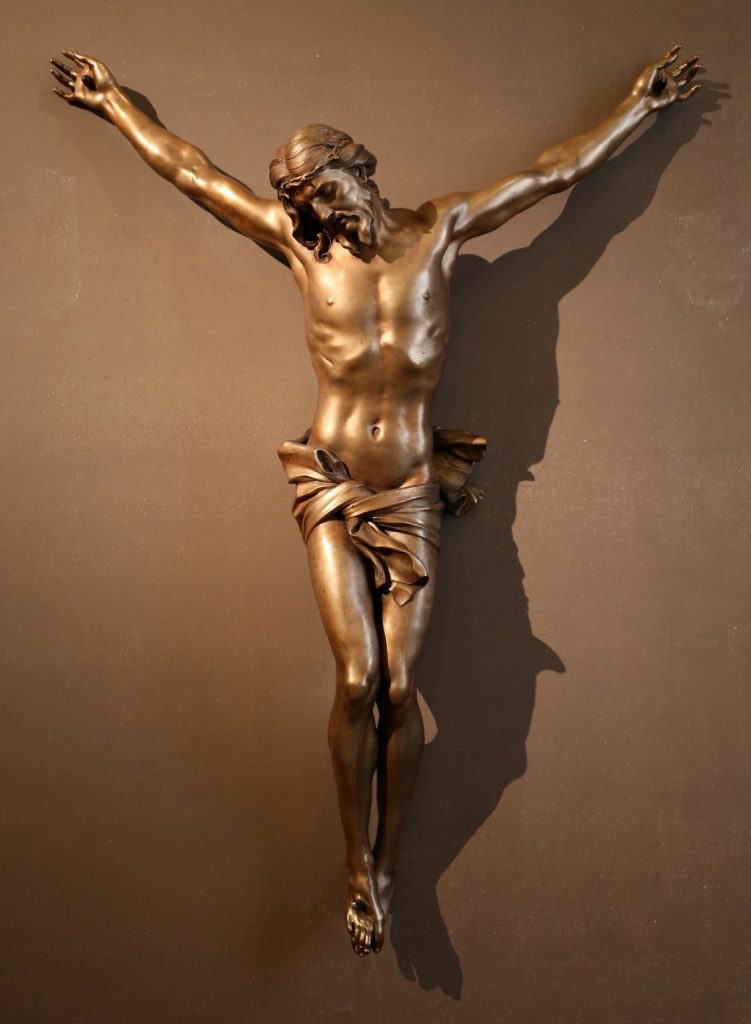
Salome with the Head of John the Baptist – Caravagio
Painted in Naples in 1609 when the painter was on the run from police and other enemies for murdering his opponent during a tennis match, “Salome with the Head of John the Baptist” was sent to Fra Olaf de Wignacourt, the Grand Master of the Knights of Malta, in an attempt to curry his favor after Caravaggio was kicked out of the order a year earlier. It didn’t work.
This is one of four paintings by Caravagio in Madrid. There are also two in the Prado and one in Thyssen-Bornemisza Museum.
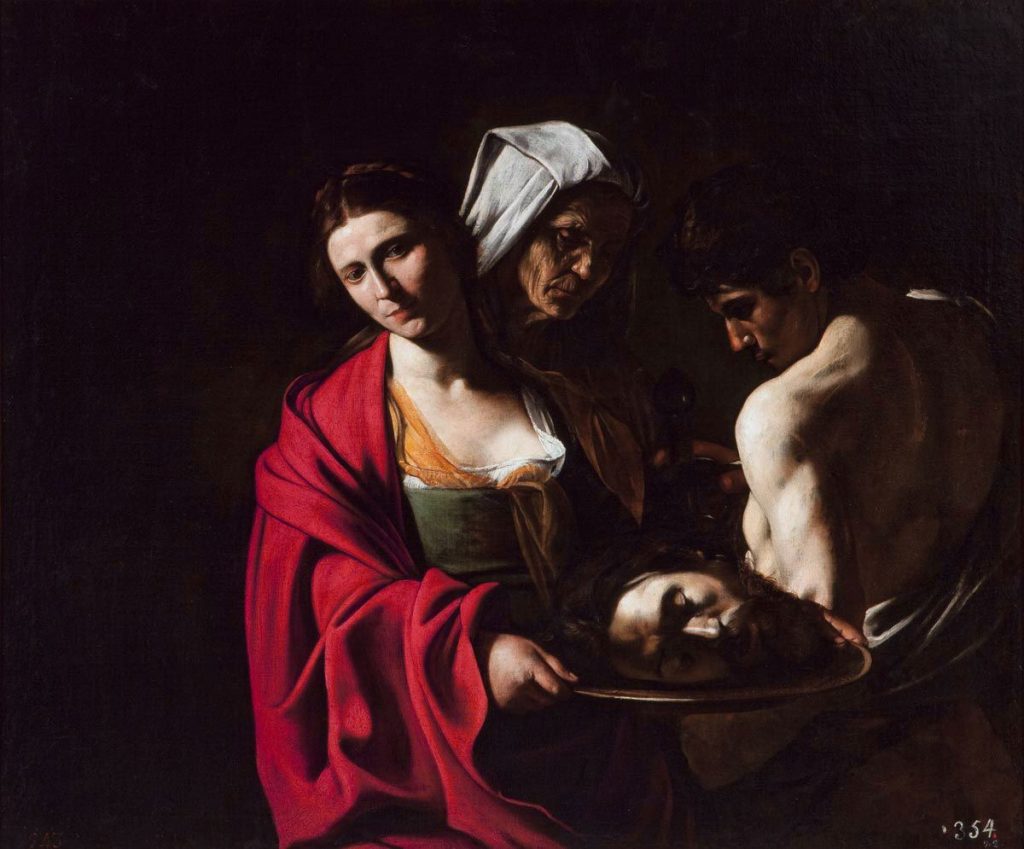
A White Horse – Diego Velázquez
This plus-sized Velazquez painting is deceptively simple. Yes, it’s just a white horse, but look closely and you can see the drama of the Baroque period poke right through this oil painting on canvas. Painted in 1635, the horse is depicted with a heavy sense of gravitas that is often rare in portraits of animals in the history of European art.
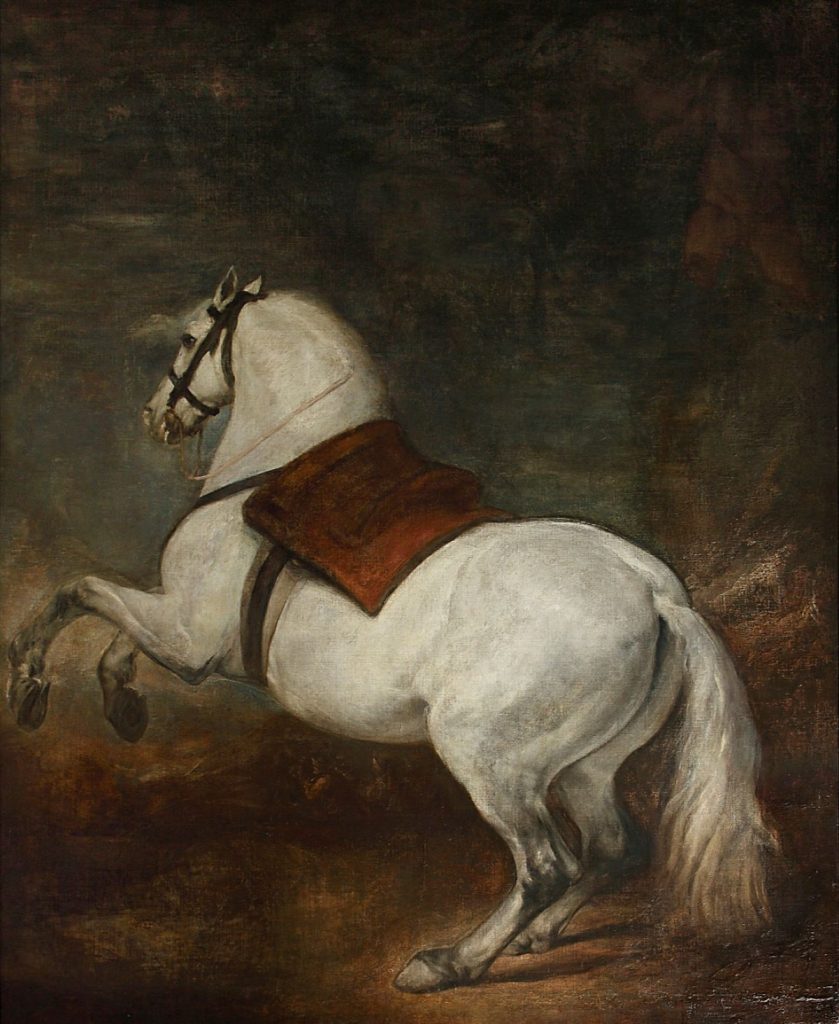
Christ Crucified – Titian
Painted in 1565 during peak Renaissance, Titian’s depiction of the crucified Christ is a dramatic one, exemplary of his late style, in which his expressiveness on the canvas became lighter and more transparent. The painting was originally housed in the Royal Monastery of San Lorenzo de El Escorial in 1574.
Charles IV with his Back Turned – Juan Bauzil
Painted in 1818 by Juan Bauzil, this “portrait” of Charles IV looks more like a travel influencer’s backside, intentionally staring away from the camera to gaze at the wonder of a historical monument. (Not surprisingly, this painting of Charles IV is among the most popular to turn up on social media.)
Traveler’s tip: Want to see more museums in Madrid? Check out our list of top picks:
- Museo Nacional del Prado
- Thyssen-Bornemisza National Museum
- Museo Nacional Centro de Arte Reina Sofía
- Sorolla Museum
Ecce Homo – Pietro Paolo Cristofari
“Ecce Homo,” translated from Latin as “Behold, the Man,” was painted by Cristofari, the director of the Studio del Mosaico al Vaticano. In the painting, Jesus is looking heavenward, his mouth slightly agape and head tilted, the crown of thorns is accentuated by the glow of light behind the Christ figure, almost like a supernatural halo.
Don’t confuse this Ecce Homo, from 1738, with the recently more famous version, in which an amateur octogenarian art restorer attempted to bring glory back to a decaying Ecce Homo painting—originally created in the 1930s—but ended up transforming the painting into something beast-like. For that, you’ll have to travel to the small town of Borja in Aragon.
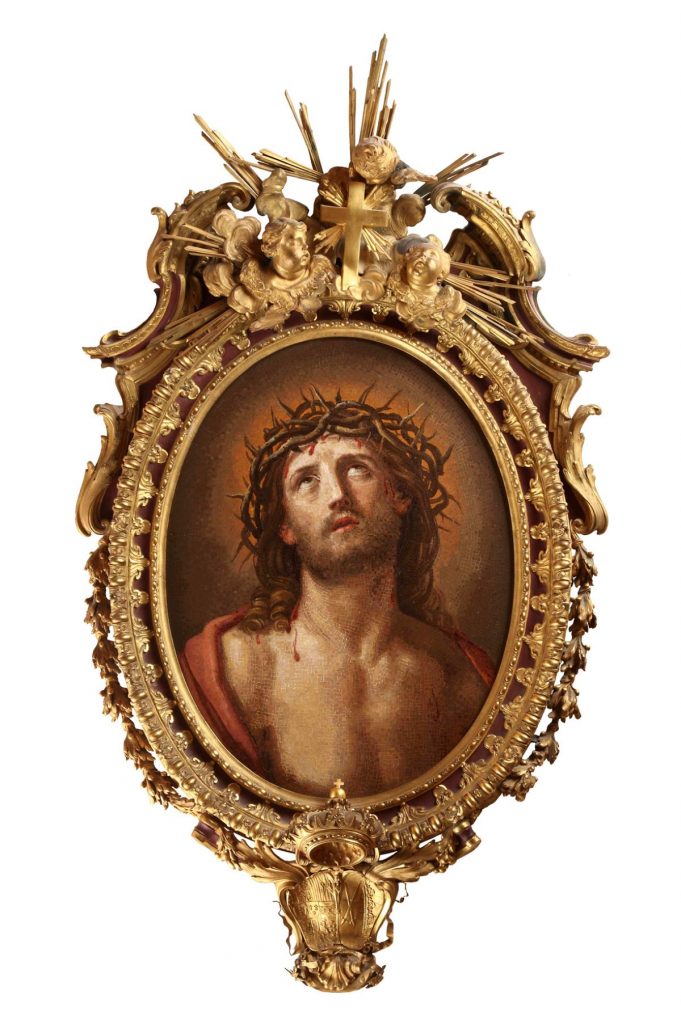
History of Madrid’s Royal Collections Gallery
The conception and opening of the Royal Collections Gallery in Madrid is almost as interesting as the gallery’s collection itself. It was originally conceived in the 1930s but stalled due to the Spanish Civil War that began in 1936. Plans were revived again in 1950 but the project was put on hold.
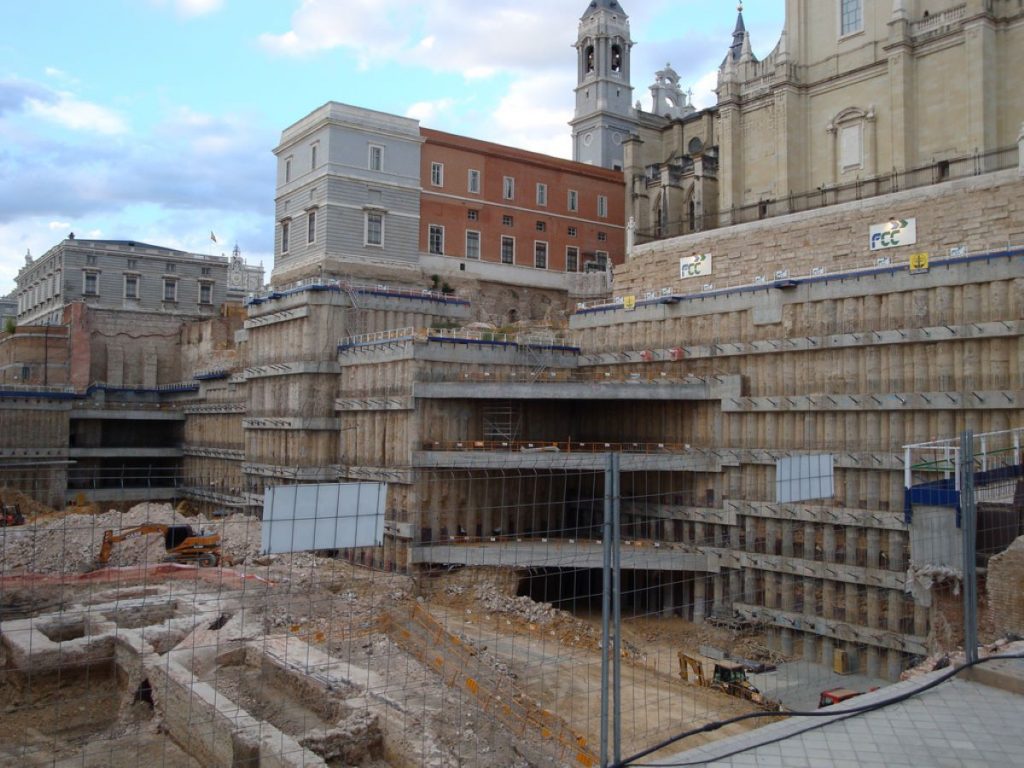
A museum years in the making
Once again, the idea got new life in 1980 and yet one more time, it was postponed. Finally, in 1998, the Patrimonio Nacional breathed new life into the idea. But the plan was delayed once more by the discovery of a 9th-century Arab Wall on the construction grounds. By 2002, there were architects attached to the project. And by 2006, a building was being constructed, designed by architects Mansilla + Tuñón.
After more delays, thanks to the 2008 financial crisis and then the Covid-19 pandemic, the Royal Collections Gallery finally opened its doors to art lovers in summer 2023.
Now that you’ve toured the Royal Collections Gallery, Madrid has plenty more royal art on display. If you’re interested in seeing more of Madrid’s royal history, make sure to check out our Madrid in a Day Tour! From the Royal Palace to hidden ruins and beautifully manicured gardens, you get a rarely-seen glimpse into Spanish royal history throughout the centuries.
